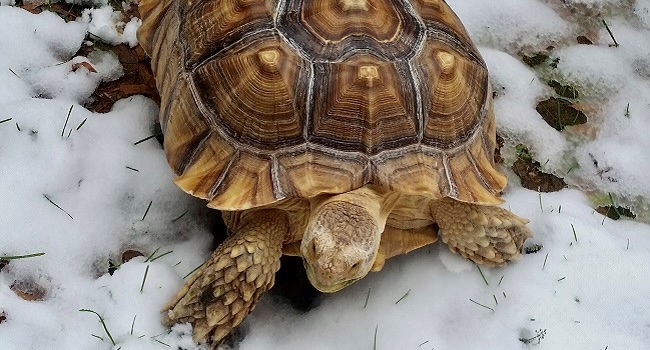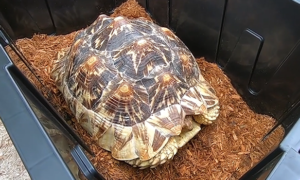It’s a myth that ALL tortoises hibernate. Yes, some tortoise species, like Russian tortoises, hibernate during winter, but other species, like Sulcata tortoises do not naturally hibernate.
If you force hibernation on baby and younger sulcatas, they may not make it through the winter months. Yes, many older and larger sulcatas will survive a below freezing, snowy winter, but that doesn’t mean they will thrive this way.
Natural Winters for Sulcatas in sub-Sahara
In sub-Saharan Africa, the coldest cold winter night might drop into the mid-60s, but the next day will be near 100 degrees.
In the burrows, where the sulcatas spend their nights, the temperature is closer to 80-degrees.
Sulcata Tortoises in Captivity
Many novice keepers believe, or have been told, that sulcata tortoises hibernate. These keepers probably let their tortoise stay outside during the winter, or put them in cold garages. They probably also notice that their tortoise slows down, doesn’t eat a lot and doesn’t move around too much. These signs are normal signs of hibernation, but they’re also signs of a tortoise’s body shutting down.
So, in captivity, keep pet sulcatas warm during the winter. If you’re trying to mimic the natural habitat, stick with overnight temperatures in the low 80s and daytime temperatures in the low 100s.
When housing large sulcata tortoises during the winter, you can either bring them into a heated garage or basement. OR build an insulated house with a heat lamp or oil-less heater.
Lock tortoises out of their burrows during the winter, forcing them to keep warm in the designated heated house.
For smaller tortoises that may already be kept in inside enclosures, stick with safe indoor temperatures. Do not force hibernation on a species that doesn’t naturally hibernate.





